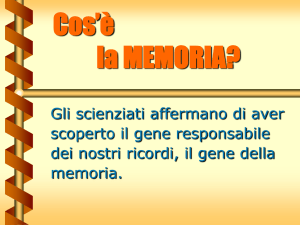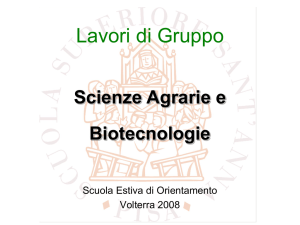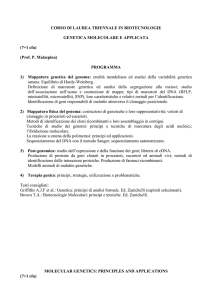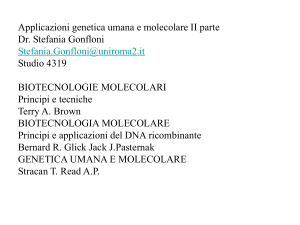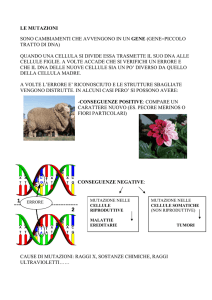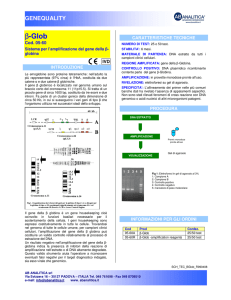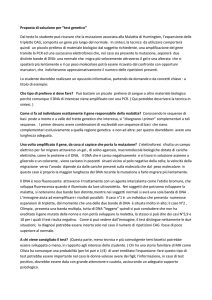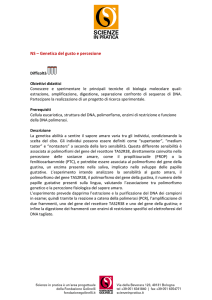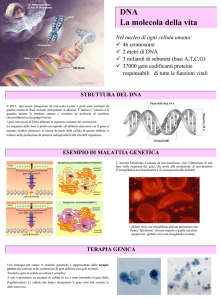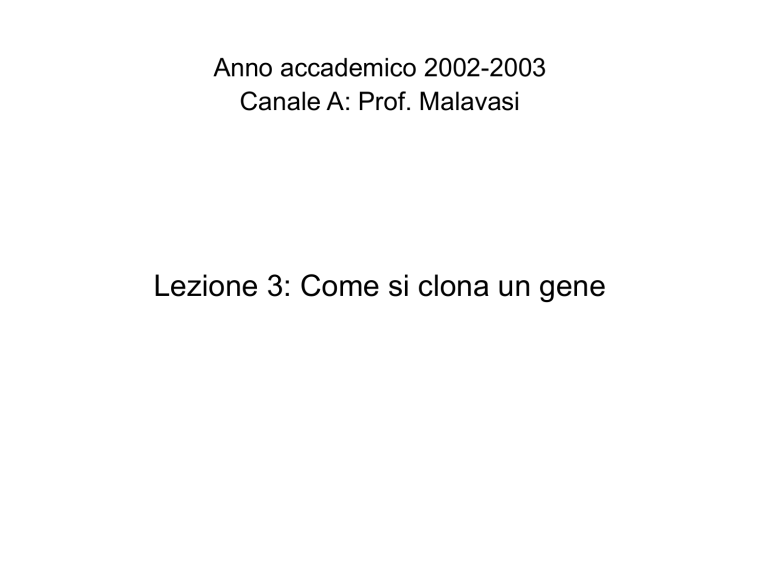
Anno accademico 2002-2003
Canale A: Prof. Malavasi
Lezione 3: Come si clona un gene
3 domande per conquistare una malattia genetica
1) Quale gene è responsabile?
2) Qual è il prodotto di quel gene?
3) E’ possibile riparare o sostituire il gene e/o la
proteina?
DEFINIZIONE
The process of molecular cloning involves isolating a DNA
sequence of interest and obtaining multiple copies of it in an
organism, usually a bacterium, that is capable of growth
over extended periods. Large quantities of the DNA
molecule can be then isolated in pure form for detailed
molecular analysis. The ability to generate virtually endless
copies (clones) of a particular sequence is the basis of
recombinant DNA technology and its application to human
and medical genetics. The name "recombinant DNA" refers
to novel combinations of DNA created between human (or
other) DNA sequences of interest and bacterial (or other)
DNA molecules capable of indefinite duplication in the
laboratory.
Identificazione della >
parte dei geni-malattia
Le tappe fondamentali
Prima degli anni 80: pochissimi geni
identificati (solo se i prodotti potevano
essere purificati)
Anni 80: comincia l’era della DNA
technology: clonaggio posizionale
Anni 90: era della PCR
Anni 2000: HUGO
Strategie indipendenti dalla posizione
1) Avendo il prodotto del gene puro
- impiego di oligonucleotidi gene-specifici come sonda
(gene per emofilia A)
- impiego di anticorpi specifici
(gene per la fenilchetonuria)
2) Conoscendo la sequenza di DNA
3) Conoscendo la normale funzione del gene
Somatic cell hybrids
Positional cloning
1) localizing a disease gene to a chromosomal
subregion, generally by using traditional linkage
analysis
2) searching databases for an attractive candidate gene
within that subregion
3) testing the candidate gene for disease-causing
mutations.
Francis S. Collins,M.D., Ph.D.
Director, National Human
Genome Research Institute
L’esempio del gene della fibrosi cistica
In July 1989, Dr. Lap-Chee Tsui and a team of
scientists working at the Hospital for Sick
Children in Toronto
L’esempio del gene dell’emocromatosi

